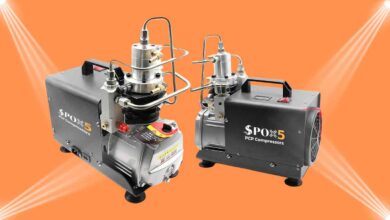Everything To Know About Electric Bikes – History And The Best Electric Bikes Today!

If you’ve noticed more electric bikes on the road recently, it’s not just you. More and more cyclists are using electric bikes more than ever before. What was once seen as a cringe type of bike has become a staple among cyclists, with a wide variety of categories and classifications.
Electric bikes, or e-bikes, present an environment-friendly alternative to motor vehicles in a world where people are always on the move and seem not to have enough time to relax.
They have a silent motor and batteries that can power the bike for up to 100 miles on a single charge. The bikes can go up to 20 miles an hour with absolutely no CO2 emission, making them perfect for cyclists who live in the big city or people with health issues and are looking for an enjoyable alternative to traditional cycling.
All in all, the best electric bikes allow riders the opportunity to enjoy a stress-free morning commute breezing through traffic without the physical demands of traditional cycling.
Since e-bikes are still a relatively new concept, we’ve created a tell-all beginner’s guide to help you understand the core competencies of e-bikes. How they work,
What Exactly Is an Electric Bike and How Does it Operate
An electric bike, or e-bike, is a bicycle with a battery and motor attached. These two components help power the bike providing the rider with power-assisted pedaling. Yes, the rider still has to pedal the bike as usual, but they’ll have a much easier experience, especially when climbing hills.
However, electric bikes can move solely on electric power, making them highly convenient for those merely looking for an enjoyable riding experience with minimal exercise.
Note that electric bikes are very much unlike electric scooters. Electric scooters use a throttle after the primary kick-off. While some eBikes do have throttles, their primary function is to offer powered assistance to supplement the cyclist’s pedaling efforts.
Electric bikes usually have a lightweight frame, but this hasn’t stopped cyclists from converting their traditional bikes to electric bikes with the help of a conversion kit.
If you’d like to one day transform your bike into an electric one, let’s walk you through some of the core components you can expect to have on your bike.
Essential Components on Electric Bikes
1. The Battery
Electric bikes are powered by rechargeable battery packs that help the motor run. These battery packs usually include various types of batteries such as Lithium-Ion, NiMH, and NiCd.
The batteries vary depending on charge capacity, voltage, and load handling, but how you use and maintain the battery will determine its lifespan.
The battery is often stored in the luggage rack. But for more natural weight distribution on the bike, the battery can also be stored on the lower sections of the frame. The battery usually charges in about five to six hours and is easily removable in case you have a spare battery.
2. The Motor/Drivetrain
The motor of the bike is what propels it, and it can go in three places depending on the type of motor. For instance, a front hub motor goes into the center of the front wheel. This is quite convenient because it gives the same feeling as a front-wheel-drive car, meaning it’s highly responsive when negotiating corners.
Mid-range model eBikes often use a rear hub motor that goes at – you guessed it – the rear of the bike. The rear hub motor is more sophisticated because it interacts with the gears and other bike parts at the rear.
Premium bikes have a central drive motor that goes on the frame of the bike. Being at a low level of the bike and under your center of balance doesn’t affect the bike’s stability at all. On the contrary, it multiplies the energy you create from pedaling and transfers the energy through the drive system and onto the rear wheel.
3. Controller/Sensor
The sensor is another critical part of the eBike, but it can be either a torque or speed sensor.
The torque sensor responds with a slight touch of assistance when navigating corners or moving through slow traffic. Once you’re on the open road and cycling more, the sensor can detect the increased effort and trigger the battery to produce more power.
In contrast, the speed sensor auto-engages the motor once you start cycling to gradually assist your ride.
4. The Throttle
As referenced earlier in this article, some electric bikes can function independently without pedal assistance. Such bikes need a throttle like the one on a moped, scooter, or motorcycle.
The throttle gives the rider complete control over the motor. They can switch it on and off as they please and can toggle between simply riding it and letting the bike run on its own or pedaling it.
As for how it feels, the throttle can be the prevalent twist-shift version which feels similar to a gear shifter on a regular bike or a simple switch.

How Far Can an Electric Bike Go?
Several factors determine the range your electric bike can cover, but it is largely dependent on the terrain, the weight on the bike, and the size of the battery.
The amount of assistance you require as you cycle will also have an impact on the range your eBike can cover. This will mainly be determined by what you’re using the bike for.
For instance, an electric mountain bike can have a range of up to 40 miles and will take about six hours to charge the battery. A city electric bike that’s designed for daily commutes will get up to 30 miles of range. Note that you can extend the range by using minimum assistance or a high level of assistance across a short distance.
If you want your bike to cover an even longer distance, you can always get an additional battery that you can switch with ease. You can always recharge the battery while at work. Monitoring your tire pressure will also help you get more distance on your bike. If you have low tire pressure, your ride will be sluggish and will reduce the mileage of your battery.
What Certain Electric Bikes Are Good For
eBikes are most definitely not like any other bicycle. While their features can appeal to many cyclists, they have certain uses for certain kinds of cyclists. Let’s walk you through some of them:
1. Commuting – CrownCruiser
Cyclists who travel long distances on their regular bikes should find the CrownCruiser extremely useful.
If you regularly use a bike to go back and forth from school or work, the commute will undoubtedly wear you out, depending on the riding conditions and the distance between your home and destination. Even if you’re riding for a short distance, riding in harsh conditions such as cold weather will undoubtedly add a rough edge to your day.
However, a CrownCruiser can solve all these issues. This electric bike can go up to 31mph, meaning it will do most of the work for you so you can reach your destination without breaking a sweat.
You can simply coast your way and avoid walking into the office or class looking all hot and sweaty from the ride there.
2. Injury Rehabilitation – Juiced Bikes
Cycling on its own is an excellent rehabilitation activity, especially for people recovering from knee and leg injuries. While pedaling to propel the bike is a low-impact activity, for some people, it can all be a little too much on bumpy roads.
Luckily, juiced bikes with fat wheels provide great comfort and flexibility to the cycling experience so that patients in rehab can cover any terrain without aggravating their injury.
3. For Traveling Purposes – Reevo
Thanks to electric bikes, bicycle tourism is steadily growing in popularity and has brought people who enjoy cycling back onto the saddle. People can now travel long distances on their bikes without having to use up too much of their energy.
Reevo has a 750W battery that can take the bike up to 25mph. Yes, you’ll still have to pedal, but the much-welcomed assistance will make it all so easy such that you can easily double or triple the distances you’re covering each day.
So, Which Are the Best Electric Bikes That You Should Consider?
Electric bikes are very much like regular pedal-powered bicycles. You can steer and pedal an electric bike just like you would with a regular bike. The only difference is that you have a battery and electric motor to assist you by making the ride less strenuous and much faster.
That said, you’re probably wondering which among the best electric bikes you should consider. In truth, it all depends on what you want the bike for. Do you want to go long distances with your bike? Do you want to move faster uphill without putting in too much effort?
Consider what you need the bike for and try to familiarize yourself with different bikes within a budget to get a feel of each, so you know what works best for you.
Read Also:
- How To Secure Your Bike From Theft?
- How To Choose The Best Motorbike Backpack?
- Road Biking Checklist: What You Need for a Better Biking Experience



